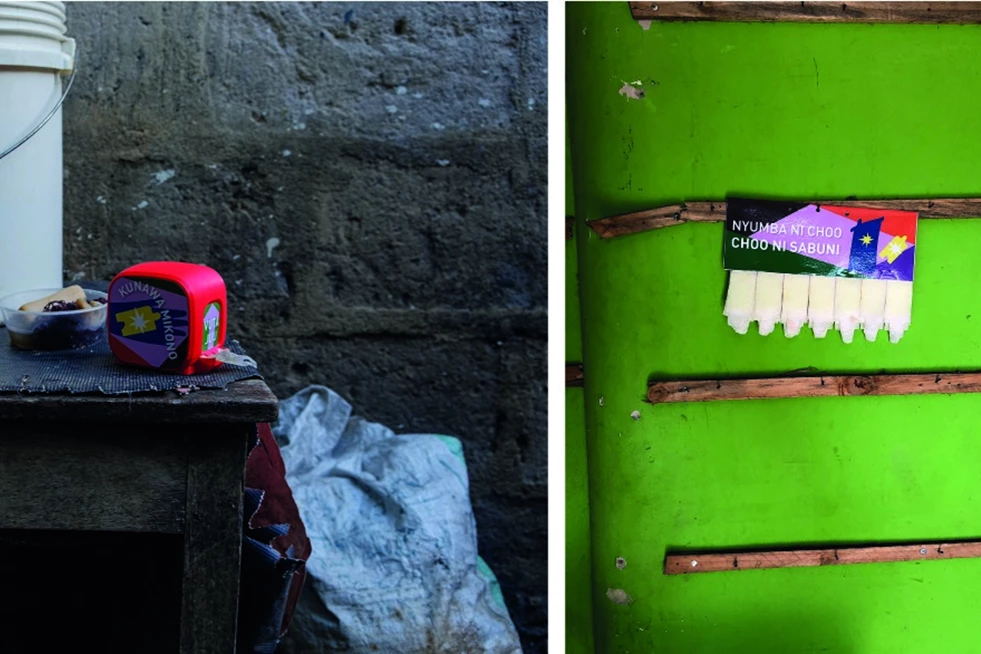While the benefits of handwashing for public health are well-known, in some developing countries soap is an unaffordable luxury. Researchers have now developed a single-use, biodegradable soap-on-a-tab that shows great promise in improving public health in areas without access to running water.
Handwashing with soap has always been a simple and highly effective way of preventing the spread of many infectious diseases. While soap and water don’t kill germs, they work by mechanically removing them from your hands.
But access to and availability of soap and water is limited in developing countries such as Tanzania, in East Africa, where a 2020 study of a typical small town found that only 13% of households had handwashing facilities. In 2016, only 7% of households nationally had a fixed place to wash their hands where there was soap and water present.
Using households around Tanzania’s Dar es Salaam and Morogoro regions as their testing ground, researchers developed a novel handwashing technology called Tab Soap. The households had no private water connection or on-site piped water, meaning that residents had to collect water themselves or pay someone to deliver it. And they had at least one child under five and at least one over five.
Based on interviews with members of these households, the researchers set about designing their new handwashing system. The first aim was to create a desirable, feasible and viable handwashing solution that was scalable. The second and most critical aim was to increase rates of handwashing with soap following bathroom use.
Handwashing behavior was evaluated by way of questionnaires, soap seller reports, electronic monitoring and discussions with the soap sellers, which helped the researchers understand the user’s perception of the product and its use. One of the biggest hurdles the researchers faced was how the households viewed soap from a cultural perspective.
“Interestingly, in the case of soap, even an object meant to be clean and to clean dirty things it comes in contact with was perceived to be contaminated,” said the researchers. “The sense of contamination around sharing soap and the usage of water presented two very clear design challenges in being able to keep products near the toilet while assuring individuals that no cross contamination occurs.”
The researchers presented households with five prototypes, which resulted in two concepts – a soap grater, which is used to recycle leftover soap, and personal soap – being eliminated. The most used prototype was the Tab Soap.
Tab Soap comes as tabs of biodegradable bamboo-based textile impregnated with soap. Once the tab is used, it can be discarded in a pit latrine where it will decompose. The tabs come on a roll or in a tear-off version.

After trialing the Tab Soap, the feedback was generally positive. Some users, however, didn’t like that the tabs were only for handwashing, whereas ‘normal’ soap could be used for a range of cleaning activities.
“The different kinds of evidence from the field trial – interviews with participants, seller documentation, data logs and field worker interviews – together paint a persuasive picture of use,” the researchers said. “The interviews support the case for these tabs being almost always used for handwashing, which was an important dimension of our objective.”
The researchers consider their Tab Soap has particular advantages. It is single-use, so cross-contamination concerns are less of a worry. It is designed only for handwashing, so it is hard to misuse the product. Its cost is comparable to alternatives such as liquid soap. A single tab can be carried anywhere and used wherever water is available. And because the bamboo-based substrate stays wet, it probably uses less water than other forms of handwashing.
While the study was small, the researchers see potential in their novel handwashing technology.
“Given the importance of hand hygiene in many public health contexts, including pandemic control, we believe this result should attract widespread interest,” the researchers said.
The study was published in the journal PLOS One.
Source: PLOS via EurekAlert!





